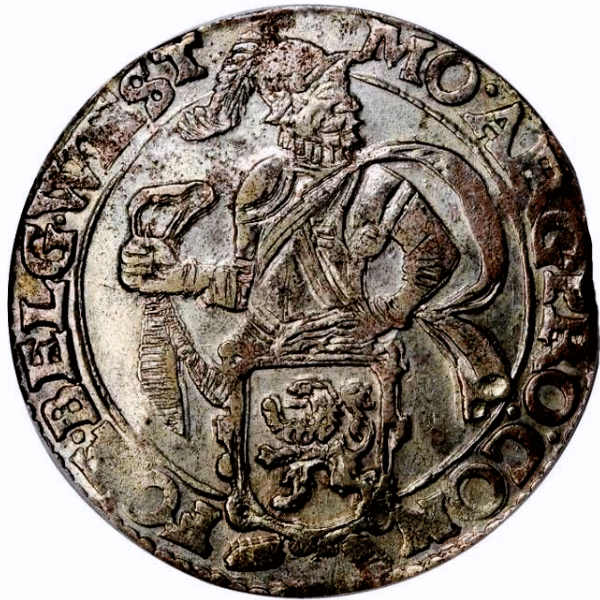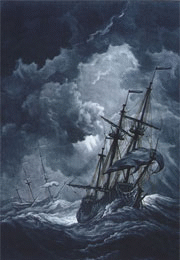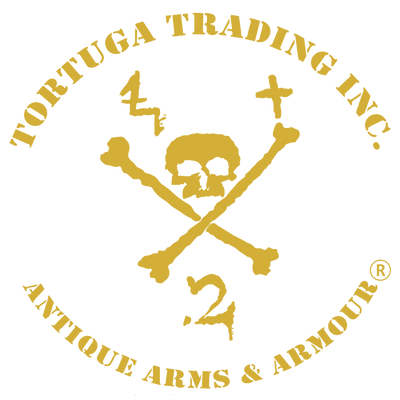A Good American Colonial/Dutch West Friesland Netherlands Provincial Silver Lion Daalder Dated 1624
A Good American Colonial/Dutch West Friesland Netherlands Provincial Silver Lion Daalder Dated 1624. Please see the important history below.
Obverse: Knight standing left, head right, holding up garnished coat-of-arms in foreground.
Reverse: Lion Rampant.
KM 14.2
GRADE: VF/XF
WEIGHT: 26.4 grams.
Note: The planchet has a large crack and scratch.
TTI-549721
HISTORY IN COLONIAL AMERICA
Ref. COIN WEEK, World Coins - Dutch Lion Daalders, America's First Dollar, by, Kent Ponterio. March 17, 2016.
Named so for its design element depicting a rampant lion, the Dutch Lion Dollar played a crucial role in world trade during the 16th and 17th centuries. The first Lion Daalders or leewndaalders were produced in the province of Holland in 1575 during the Eighty Years War. Within a short period of time, most mints throughout the Dutch provinces began producing the new coinage. Although a variety of mints produced Lion Daalders, they are easily distinguishable from one another by their legends, which in most cases bear the name of the Dutch province where they were made.
Another distinguishing factor is the half-length figure of an armored knight, which is found holding the coat of arms of the province of manufacture. Lion Daalders were produced in .750 fine silver with the predominant alloy being copper.

Due to its debased silver content, Dutch merchants and tradesmen such as the Dutch East India Company found it to be the ideal coin for export and trade, leaving the higher fineness coinage such as Ducatoons (.920 fine silver) to circulate in the homeland.
Lion Daalders saw extensive use in Europe, Africa, The Middle East and even the New World. Due to their popularity, mints in Italy, Germany, Monaco and other regions soon began striking their own coinage in imitation. Further trade in the Middle East saw the introduction of Lion Dollars where the province name was replaced with the word “orient” signifying it specifically for use in the East. Some of these were even denominated in Farsi with a Persian inscription designating them with a set value of 6 Shahi for use in trade for items such as silk and rose oil.
The circulation of Lion Daalders saw extensive use in colonial America as well. Then named New Amsterdam, the city of New York was colonized by the Dutch in the early 17th century. The Dutch East India Company established a sizeable fort on the southern tip of Manhattan Island. The wall of the fort was located on the site of what is now Wall Street in the financial district of lower Manhattan.
Several contemporary accounts contest to the circulation of Lion Daalders in colonial America. In fact, the first paper money issued by the colony of York was payable in Lion Dollars.
Perhaps one of the best documentations of Lion Daalders circulating in Colonial America comes from the wreck of HMS Feversham. Feversham sank in route from the Gulf of Saint Lawrence to New York City in October of 1711. The salvage and recovery of the wreck’s contents provide an important historical record of the coinage circulating in colonial America during that time period.

HMS FEVERSHAM WAS A 32-GUN FIFTH RATE WARSHIP. THIS TYPE OF VESSEL, SOMETIMES CALLED A ONE-AND-A-HALF DECKER, IS REPRESENTATIVE OF THE GROWING NUMBERS OF SMALLER WARSHIPS (LATER CALLED FRIGATES) BEING DEVELOPED BY THE ROYAL NAVY TO ESCORT SUPPLY SHIPS IN RESPONSE TO THE NEW STRATEGIC EMPHASIS BY THE FRENCH ON COMMERCE RAIDING INSTEAD OF FLEET BATTLES. THESE SMALLER WARSHIPS WERE IDEAL FOR COLONIAL WATERS AND WOULD PLAY IMPORTANT ROLES IN BATTLES BETWEEN THE FRENCH, ENGLISH AND AMERICANS IN NORTH AMERICA.NOTE: THE NAME IS SPELLED IN SOME SOURCES AS FAVERSHAM.
Originally auctioned in 1989 by Christies, New York, the cargo contained a number of Massachusetts silver coins as well as Spanish Colonial Cob coinage and Dutch Lion Daalders. In colonial times several accounts refer to the Lion Daalders as “Dog Dollars”. Due to their debased metallic composition, the coins tended to wear fairly easily and the rampant lion was sometimes associated with the image of a canine.
The introduction of the Spanish Milled 8 Reales in the early 18th century caused the Lion Dollars to lose popularity to its Spanish counterpart. The milled 8 Reales were of considerably finer silver at .917 fine and bore a milled edge preventing if from shaving or clipping.
Nevertheless, the Lion Daalder holds an important place in Colonial history as America’s first dollar and the root of the word from where the current currency (the U.S. Dollar), found its name.









